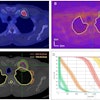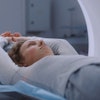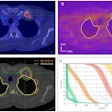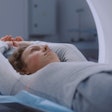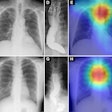
CLEVELAND - Providing digital image distribution to the OR can be a tricky operation due a lack of available space, the need for rapid turnaround of intraoperative imaging studies, and surgeons who can be difficult to please. But Web-based delivery of images to the operating room can be successful, according to a presentation Saturday at the Symposium for Computer Applications in Radiology.
Ohio State University Medical Center in Columbus operates three hospitals and an outpatient imaging center, and conducts approximately 250,000 imaging procedures per year. Filmless except for mammography, the university's PACS network provides clinicians with Web-based access to images over an ATM network backbone using any of 2000 institutional PCs or their office PCs, Bennett said.
In an effort to expand digital image distribution services to the OR's, the institution began a pilot project to six of its 26 operating rooms. The rooms included in the project were used mainly by orthopedic surgeons, neurosurgeons, and vascular surgeons, said Dr. William Bennett of Ohio State University Medical Center.
The rooms were provided with 733 MHz-powered minitower PCs with 10-baseT Ethernet network connectivity, two wall-mounted 19-inch active matrix liquid crystal displays (AMLCD), and a dual-display graphic card. A sterile cover for the mouse and keyboard was also included.
After a year of use, most surgeons have given positive feedback, with detractors generally limited to those who have difficulty using computers, Bennett said. Surgeons who like the systems appreciate the availability of films, the level of image quality, and the ability to retrieve complementary studies, he said.
"Other surgeons that don't have it in their ORs want it," he added.
Negative comments included difficulties in using a mouse with a sterile cover, a lack of templates for orthopedic devices, and distance from the table. Some surgeons also expressed big concerns over MRI studies, particularly regarding limitations in their ability to display multiple pulse sequences easily, and select the images they want to use in the OR. In addition, systems crashes and the length of time for intraoperative films to be delivered resulted in negative comments from some surgeons, he said.
By Erik L. RidleyAuntMinnie.com staff writer
May 4, 2002
Related Reading
Radiology and orthopedics join forces to cut throughput time, June 13, 2001
German firm offers speedy Web-based image access, May 16, 2001
Copyright © 2002 AuntMinnie.com

